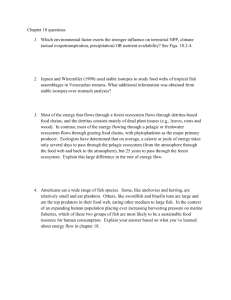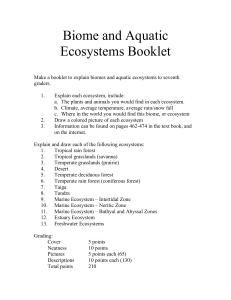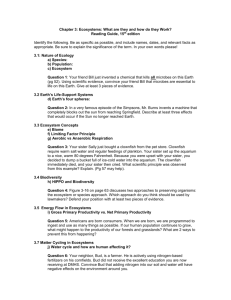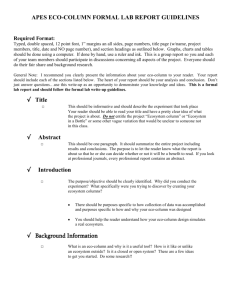Ecosystems Study Guide
advertisement
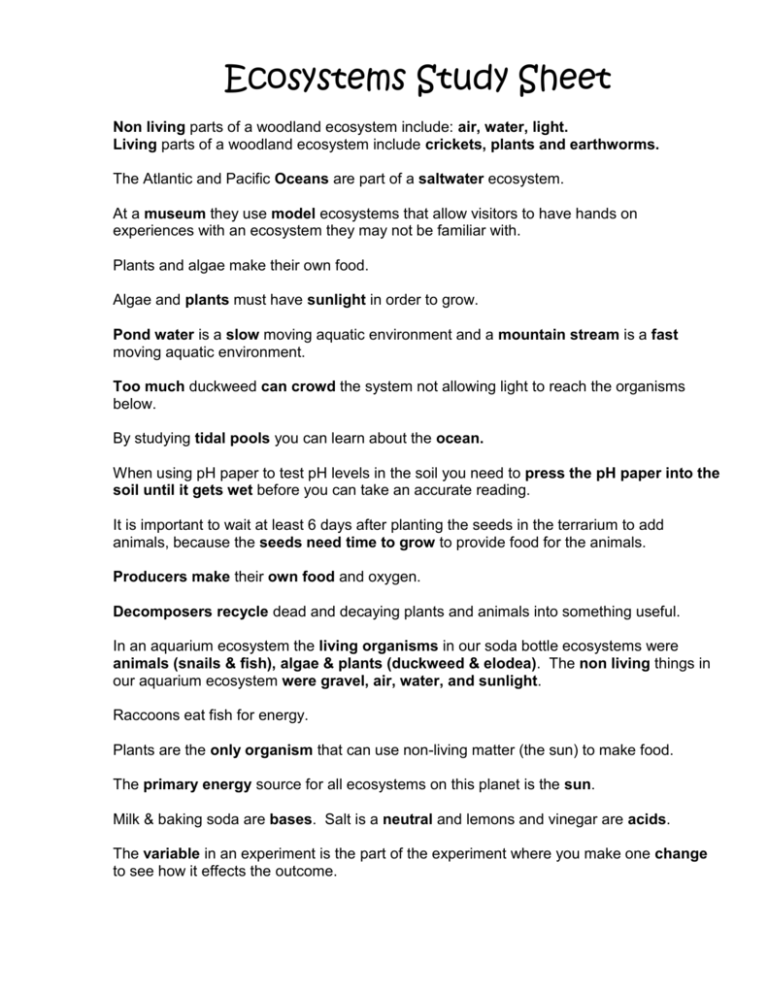
Ecosystems Study Sheet Non living parts of a woodland ecosystem include: air, water, light. Living parts of a woodland ecosystem include crickets, plants and earthworms. The Atlantic and Pacific Oceans are part of a saltwater ecosystem. At a museum they use model ecosystems that allow visitors to have hands on experiences with an ecosystem they may not be familiar with. Plants and algae make their own food. Algae and plants must have sunlight in order to grow. Pond water is a slow moving aquatic environment and a mountain stream is a fast moving aquatic environment. Too much duckweed can crowd the system not allowing light to reach the organisms below. By studying tidal pools you can learn about the ocean. When using pH paper to test pH levels in the soil you need to press the pH paper into the soil until it gets wet before you can take an accurate reading. It is important to wait at least 6 days after planting the seeds in the terrarium to add animals, because the seeds need time to grow to provide food for the animals. Producers make their own food and oxygen. Decomposers recycle dead and decaying plants and animals into something useful. In an aquarium ecosystem the living organisms in our soda bottle ecosystems were animals (snails & fish), algae & plants (duckweed & elodea). The non living things in our aquarium ecosystem were gravel, air, water, and sunlight. Raccoons eat fish for energy. Plants are the only organism that can use non-living matter (the sun) to make food. The primary energy source for all ecosystems on this planet is the sun. Milk & baking soda are bases. Salt is a neutral and lemons and vinegar are acids. The variable in an experiment is the part of the experiment where you make one change to see how it effects the outcome. The control in an experiment is the part of the experiment that you do not change so you can compare it to the reactions of those things that you did change. Rock salt on snow covered yards, acid rain and chemical fertilizers are all types of environmental problems. Determining if a substance is acidic, neutral or basic is the measure of its’ pH. In the soda bottle aquarium the plants are providing oxygen for the aquatic system. If you blow air in water you are adding oxygen to the water. Aquariums often have aeration systems so that they can accommodate more fish. (The more fish in a space the more oxygen is needed). Prediction means that based on the data you have collected, you can make an educated guess about what will happen in the future. The process of decay allows the environment to recycle decaying plants and animals and puts back nutrients into the soil. Snails and isopods are considered scavengers.



